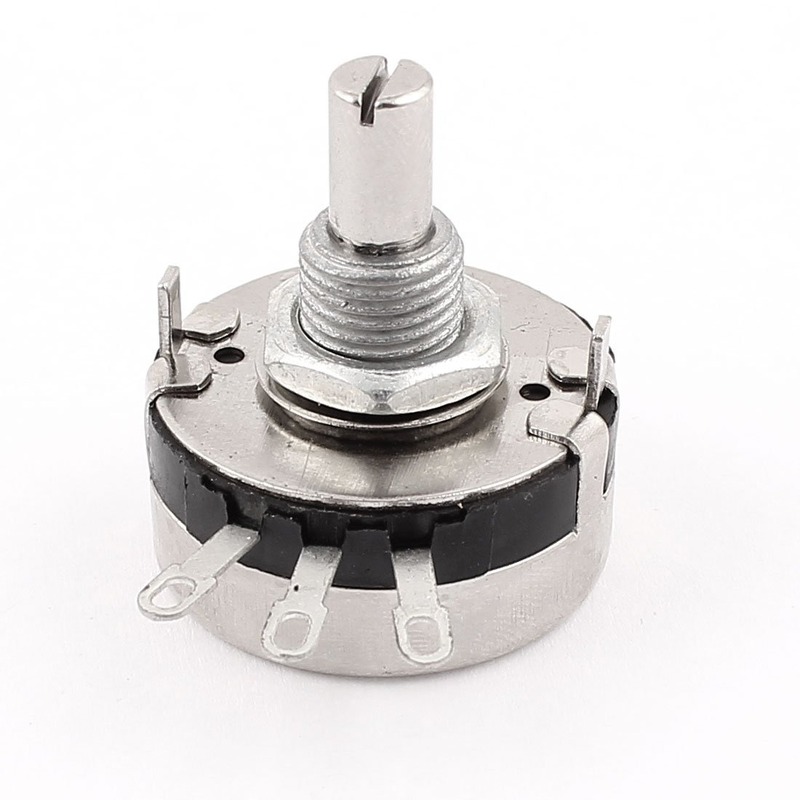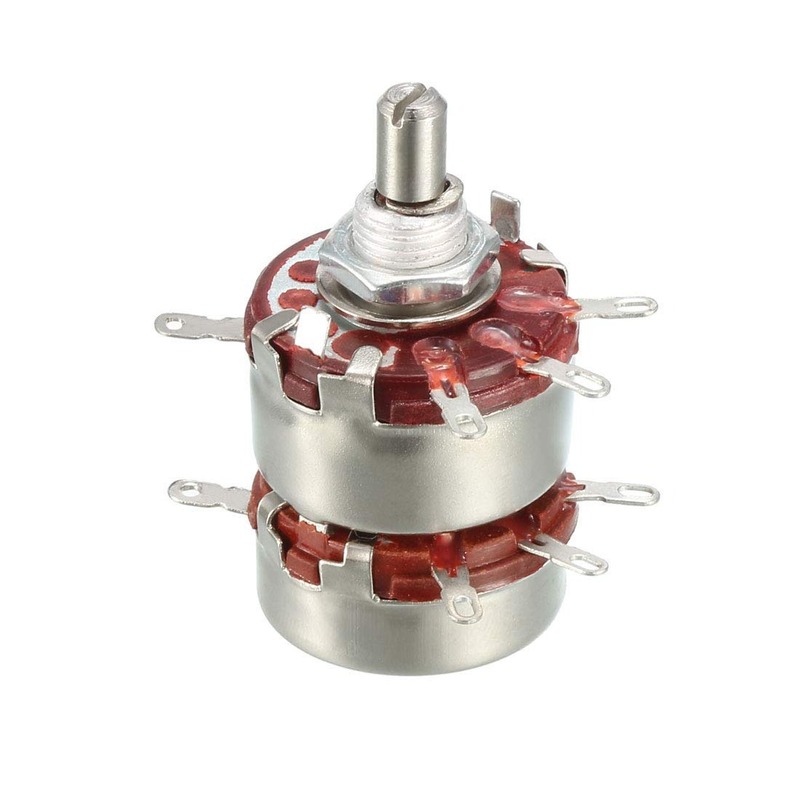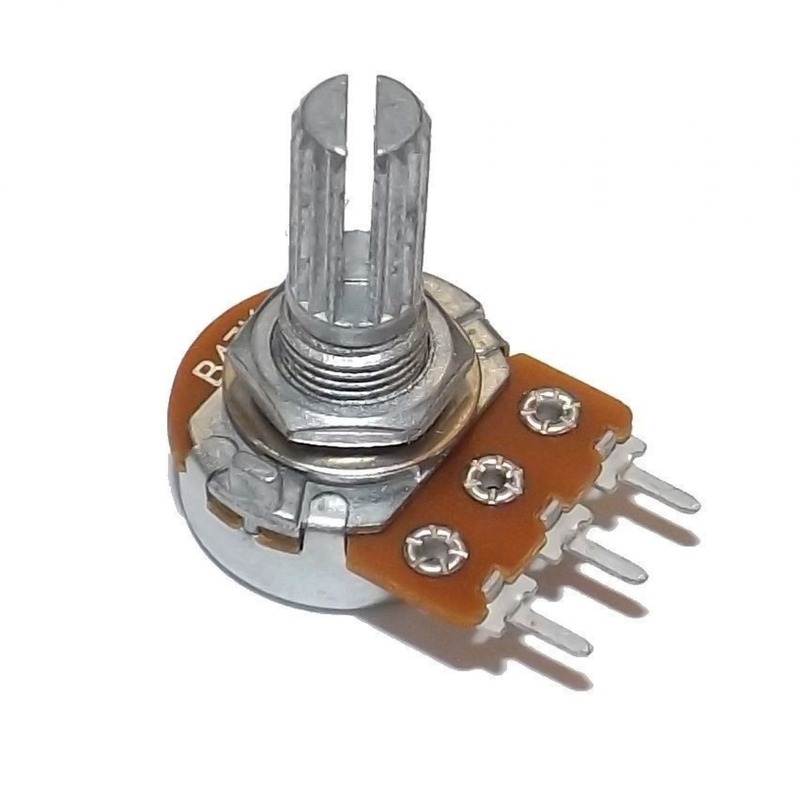Introduction to Variable Resistors
Variable resistors are essential components in electronic circuits. They allow users to adjust resistance. This adjustment enables precise control over current flow. Variable resistors come in various forms. They each serve different purposes. By turning a knob or sliding a lever, users can change resistance values. This functionality is important for tuning circuits, calibrating equipment or adjusting light and sound levels. Recognizing the right type of variable resistor for a task is crucial. It ensures optimal performance and reliability of electronic devices.
Types of Variable Resistors
Variable resistors are diverse. They differ in design and purpose. Knowing these types aids selection. Here are common types:
- Potentiometers: These are the most known variable resistors. They have three terminals and a rotating knob. They work well for adjusting volumes in audio devices.
- Trimmers: Trimmers are small potentiometers. They need a screwdriver for adjustment. They suit fine-tuning tasks in circuits, often used once or rarely adjusted.
- Rheostats: Rheostats handle higher power levels. They adjust light or motor speeds. They usually have two terminals and a slider.
- Digital Potentiometers: These are modern forms. They use digital signals for adjusting resistance levels. They fit in digital electronics needing precise control.
Each type has its unique features. Users must understand these before choosing. They should consider the required adjustability, power handling, and form factor. The right choice ensures efficiency and extends lifespan of electronic circuits.

Key Considerations for Selecting Variable Resistors
When choosing the right variable resistor for a project, there are several factors you must consider. These factors ensure that the variable resistor fits the specific needs of your circuit and performs as expected. Keep the following key considerations in mind:
- Resistance Range: Identify the minimum and maximum resistance values your application requires. Make sure the variable resistor covers this range for effective control.
- Tolerance: Look for the tolerance rating, which indicates how much the resistance can vary from its specified value. A lower tolerance means more precise resistance control.
- Power Rating: Match the power rating of the variable resistor with the maximum power it will need to handle. This prevents overheating and potential damage.
- Physical Size: Consider the size constraints of your device. The resistor should fit well within the circuit without causing layout issues.
- Adjustment Type: Decide between rotary, slider, or digital adjustments based on the ease and frequency of resistance changes needed.
- Terminal Configuration: Check if you need a two-terminal rheostat or a three-terminal potentiometer, based on the circuit design.
- Environmental Conditions: Ensure the variable resistor can withstand the operating temperatures and conditions it will face.
- Manufacturer Specifications: Review data sheets for detailed specifications and verify the variable resistor’s compatibility with your application.
By carefully considering these aspects, you can select a variable resistor that ensures peak performance and reliability for your electronic projects.
Variable Resistor Applications in Electronic Circuits
Variable resistors have widespread applications in electronic circuits. These versatile components play a critical role in a variety of settings. Let’s explore some common uses:
- Volume Control: Potentiometers are often used in audio equipment. They allow users to adjust the sound level with ease.
- Light Dimming: Rheostats can regulate the intensity of lights. This makes them perfect for lighting systems that require adjustable brightness.
- Calibration: Trimmers are ideal for precise adjustments. They are crucial in calibrating instruments to ensure accurate readings.
- Tuning Circuits: Variable resistors help fine-tune signal strengths in radio and TV receivers.
- Motor Control: Rheostats adjust motor speeds. They are key in applications needing variable speed control.
- Temperature Regulation: In thermostats, variable resistors maintain desired temperature levels by modulating heating elements.
Whether it’s for controlling volume or calibrating equipment, variable resistors are fundamental. They allow for precise modifications and can significantly impact the functionality and performance of an array of devices. By understanding the role of variable resistors, designers can create more effective and user-friendly electronic products.

How to Interpret Variable Resistor Specifications
Interpreting the specifications of variable resistors is vital for choosing the right component for your needs. Here’s how to read and understand the specs:
- Resistance Value: Look at the rated resistance. It shows the resistance the variable resistor can offer at its maximum.
- Tolerance: Check the percentage showing how much the actual resistance can differ from the rated value.
- Power Rating: This indicates the maximum power the resistor can handle before it risks damage. It’s usually given in watts.
- Temperature Coefficient: This tells you how the resistance may change with temperature variations.
- Size and Footprint: These details help you know if the resistor will fit on your circuit board.
- Operating Voltage: It’s the range within which the resistor can safely operate. Ensure it matches your circuit’s voltage.
- Adjustment Mechanism: Understand if it’s adjusted by a knob, screwdriver, digitally, or another method. This affects usability.
- Material: The build material can affect performance and durability.
Careful review of these specifications will guide you in finding a variable resistor suitable for your circuit’s performance and longevity. By matching specifications to your requirements, you can ensure successful integration into your designs.
Step-by-Step Guide to Incorporating Variable Resistors in Design
Incorporating variable resistors into an electronic circuit design involves several clear steps. To ensure an optimal outcome, follow this practical guide:
- Step 1: Analyze Circuit Requirements: First, assess the function of the variable resistor within your circuit. Consider control needs and signal processing.
- Step 2: Select the Appropriate Type: Choose from potentiometers, trimmers, rheostats, or digital potentiometers. Your decision should align with the application’s demands.
- Step 3: Determine Power and Resistance Needs: Identify the required power rating and resistance range. This ensures compatibility with the circuit’s performance expectations.
- Step 4: Evaluate Size and Adjustment Type: Ensure the variable resistor fits the physical space. Decide if a knob, slider, or digital adjustment is best suited for user interaction.
- Step 5: Check Environmental Suitability: Make sure the component can endure the operating environment. This includes factors like temperature and humidity.
- Step 6: Read Specifications Carefully: Examine the manufacturer’s data sheet. Verify tolerance, power rating, and temperature coefficient details.
- Step 7: Test in Circuit: Before finalizing, test the variable resistor within the circuit. This helps detect any unforeseen issues early on.
- Step 8: Implement and Calibrate: Install the variable resistor. Make necessary adjustments to achieve desired performance levels.
By methodically following these steps, you ensure the variable resistor integrates well within your design. This approach minimizes errors and enhances the effectiveness of the end product.
Common Mistakes in Using Variable Resistors and How to Avoid Them
To get the best performance out of your electronic circuits, watch out for these typical mistakes when using variable resistors:
- Overlooking Power Ratings: One common error is ignoring the power rating. Never use a resistor that cannot handle the required power. This can cause overheating or failure. Instead, choose a resistor with a power rating that exceeds your circuit’s maximum need.
- Misjudging Resistance Range: Using a resistor with an insufficient resistance range can limit functionality. Ensure the resistor covers the full range needed for effective operation.
- Incorrectly Wiring Terminals: Connecting terminals wrongly can impact performance. Double-check the manufacturer’s guide for the proper wiring of the resistor’s terminals.
- Forgetting Tolerance Levels: Don’t forget to consider tolerance. A lower tolerance is usually better for precision. Pick a variable resistor with the right tolerance to maintain accuracy.
- Neglecting Environmental Factors: Variable resistors can degrade in harsh conditions. Choose components that are rated for the environmental stresses they will face.
- Using Worn-Out Tools for Adjustments: Over time, tools like screwdrivers can wear out, leading to imprecise adjustments. Use tools in good condition for accurate setting of trimmers and potentiometers.
- Skipping Regular Maintenance: Without maintenance, variable resistors can become unreliable. Clean and calibrate them regularly to keep them in peak condition.
By being mindful of these aspects, you can avoid common pitfalls and extend the lifespan of your electronic circuits. Carefully consider each point during both selection and use of variable resistors.

Tips for Maintaining Variable Resistors
Maintaining variable resistors is key to their performance and longevity. Here are practical tips to help ensure they remain effective over time:
- Regular Cleaning: Dust and dirt can build up on variable resistors. Gently clean them with a soft brush or air blower.
- Avoid Overheating: Ensure they stay cool during operation. Too much heat can damage the resistor’s components.
- Periodic Inspection: Check variable resistors for signs of wear or damage. Replace them if needed to avoid circuit issues.
- Proper Storage: When not in use, store variable resistors in a dry, cool place. This prevents moisture and temperature damage.
- Calibration Checks: Test them regularly to ensure they provide accurate resistance. Adjust if necessary.
- Use Correct Tools: When adjusting trimmers or potentiometers, use the right screwdriver size. This avoids damage to the adjustment mechanism.
By following these tips, you can keep your variable resistors functioning correctly and extend their useful life. Good maintenance habits save time and money by preventing circuit failures due to faulty resistors.










